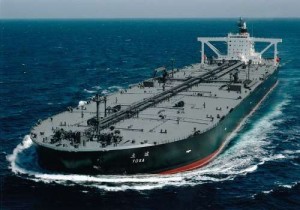Actually, this post doesn’t have anything–directly–to do with the title, I just always wanted to use it. James Howard Kunstler used it as a joke referring to the oft-lofted anti-war poster, pointing at the time (probably 2003) to the immediate huge drop in Iraqi oil production at the beginning of the war, which I might add took years to come even close to where it had been. Those who know me know references to US policy in the Middle East being “all about oil” is nails->chalkboard for me (it’s not entirely unfounded, just a better beginning to a conversation than the ending it’s often treated as). So…
US Oil Production and Consumption
The US produces a lot of petroleum, actually (we’re the world’s 3rd-largest producer at 11%; we export about 2 million barrels/day), but we consume even more. About 51% (2009) of US consumption comes from foreign sources (18.8 million barrels/day in 2009). EIA projections have that coming down to 45% in 2035. By the way, some refining processes actually increase the volume of refined output (a not inconsiderable amount–1 Mbpd in 2007)–the increased volume is actually counted as domestic production regardless of where the crude came from!
Where US Oil Comes From (and Where it Doesn’t)
About 1/2 of our imported oil comes from the Western Hemisphere (i.e., not the Middle East–about 17% comes from the Persian Gulf). The top five sources for US oil (the middle three do switch positions from year to year):
- Canada (21% gross)
- Mexico (10% gross)
- Venezuela (9% gross)
- Saudi Arabia (9% gross)
- Nigeria (7% gross)
What “Sweet, Light Crude” Means
“Lightness” refers to the American Petroleum Institute’s measure of the gravity of crude relative to that of water. The scale goes from light to heavy; most grades fall between 10-70 “degrees”, though Canada’s oil sands output is very heavy, ~8 degrees.
“Sweetness” refers to the sulfur content of the crude; <5% sulfur is considered “sweet”, anything more is considered “sour”.
Where Oil Prices Come From
West Texas Intermediate is the main benchmark for oil coming into the US. It’s sourced in Texas and mainly consumed internally. Its price is usually about $1-2 lower than the price of Brent Crude.
When you hear reports about the price of a barrel of oil, it probably is referring to the price of Brent Crude. Brent is the main global benchmark; lower- and higher-quality crudes may be “pegged” to the price of Brent. It’s sourced mainly in the North Sea, and consumed largely by Europe. There a a few “flavors” of Brent:
- Brent Sweet Light Crude
- Oseburg
- Ekofisk
- Forties
Dubai Crude is another benchmark, particularly for the sale of oil going to Asia. This is sourced in Dubai (and Oman), and exported/refined externally.
There’s also the OPEC Reference Basket–this is a weighted average from ~11 sources. A more nuanced way of managing oil prices (beyond brute-force supply variation) is controlling the output from one source relative to the others.
Those are the main benchmark grades. You can get an idea of the variability of grades (which vary from field to field–sometimes widely) by looking at this chart of sources and grades.
Iran
Iran Heavy is pegged to Brent. Because of its lower quality, it usually sells about $6 less than Brent. I mention this because we talk a lot about Iran’s oil production (they are the world’s 5th-largest producer), and the geopolitical implications, especially in light of the UN sanctions.
Iran actually suffers a bit–even when oil prices rise–not just because of the sanctions, but because the crude is heavy and sour, and thus more expensive to refine (and can’t be processed in as many refineries). Refineries are expensive to build and maintain, and not as flexible in processing various grades as you might think. They export much of their crude, and even for internal consumption end up importing gasoline.
Iran had actually been “hoarding” crude in 10-28 Very Large Crude Carriers (VLCCs) for several years. No one says exactly why, but it’s a lot of oil they’re storing–a big VLCC can hold about 2 Million barrels. They’re also very expensive to maintain, insure, and rent. I last speculated with a friend on why that was in 2008, wondering about efforts to constrain world supply and benefit financially, but they’re still there (though I don’t mean to overstate–there is some movement out of Iran, but they are always storing). And there are more of them.
Despite the sanctions, a lot goes to China, and one might assume that they benefit from tightening (but not ceased) supply from Libya. And Europe, too:
But since Iranian sanctions were tightened, the biggest trade for NITC’s tankers have involved shipments of Iranian crude for NIOC to Ain Sukhna. From there, crude is pumped to the Sidi Kerir terminal on Egypt’s Mediterranean coast, where it is blended with other Middle East crudes. From Sidi Kerir, crude is sold to traders based in the Mediterranean, with the biggest volumes going to Italy, Spain and to Turkey.
And Iran recently reduced its domestic subsidies for gasoline, provoking some violence, a huge spike in gas prices (obviously), apparently showing signs of bite from the sanctions.

